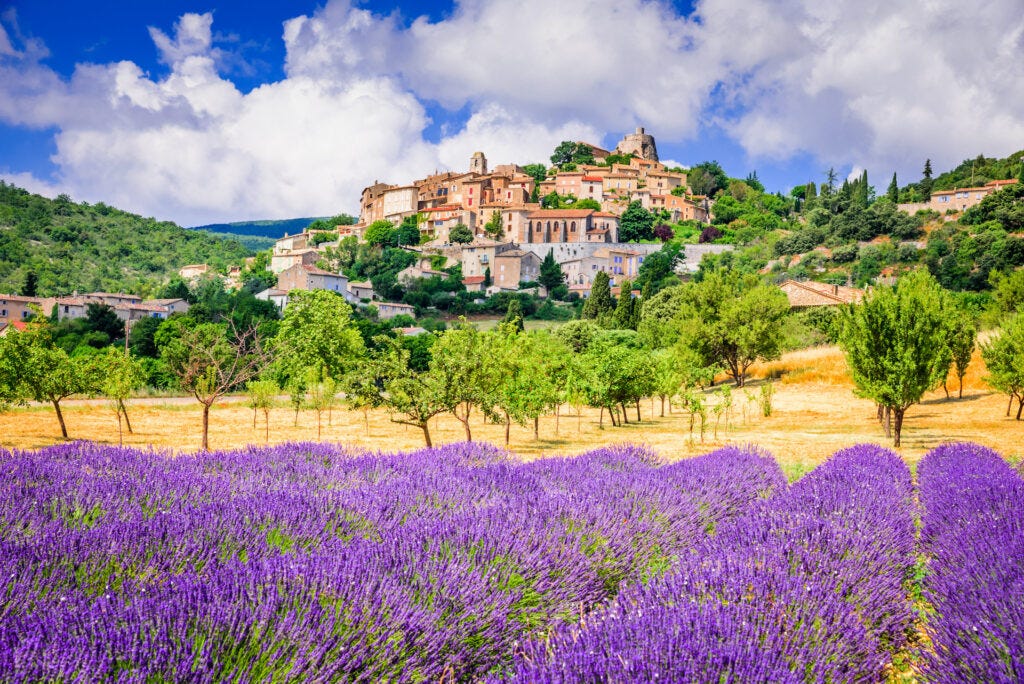What Our Bodies Know about Life, Death, and Resurrection
A guest letter from Stephanie Duncan Smith ✨
Regularly on Letters From a Catholic Feminist, I share about books that gladden my heart and strengthen my spirit. I recently had the good fortune of reading
’s Even After Everything: The Spiritual Practice of Knowing the Risks and Loving Anyway and I’m happy to have Stephanie share a bit of the book here on Letters. If the process of reclaiming your wholeness as a woman is at all familiar to you, I'd invite you to order your copy today. xo - CWhen I first got my period, the first person I told was my mom—and I still remember the way she threw up her hands and danced around the kitchen, her joy giving liberative wing to mine. She took me out to lunch that very day to celebrate—“You’re a woman now”—and it felt beautiful: a sacred beginning. But it wasn’t long before I caught wind of other narratives. When I told my best friend the news, I assured her we’d celebrate when her time came, too. Then I learned it already had, some time ago—and she’d never told me.
Teachers and youth leaders affirmed this secrecy by speaking about our menstruation in code, skirting direct references with air quotes and sidelong winks that made it plain: We don’t talk about this, not even among ourselves.
Sadly, I took the cue, and understood my cycle only as something that held me back from my actual life. It was a disruption, defined by sick days and sitting the pool out and staying home with a heating pad. The way I saw it, my period was essentially punitive, removing me from my life in some kind of biological time-out.
Once in the early years of our marriage, in a particular era of prolonged overwork and burnout, I went nearly six months without a period. But the worst part is, my body was breaking the glass and sounding the alarm, yet I was too preoccupied to hear her distress signals. The saddest thing to me about this is that it never occurred to me to seek medical help or start asking questions. It never occurred to me—not once—to take a pregnancy test, just to be certain.
But now years later, on the other side of our first pregnancy and our first loss, I was desperate to understand my body and it’s innerworkings. I started with some basic research on hormonal health, and quickly learned the medical community had a radically different name for what I was calling a problem to manage. They called it the fifth vital sign, elevating menstrual health to the essential functions of body temperature, blood pressure, heart rate, and breathing rate. What I saw as a liability was actually an embodied icon of life itself.
For too long, I had taken the stance that my cycle was just a grimy reality standing between me and the life I thought I wanted. Now, upon closer inspection, this was not the relationship with my body that I wanted, nor the life. This squeamishness is learned, spoken into our lives by the tale as old as time that women should be sorry for taking up space; that we should apologize by making ourselves small and keeping our messy, bodily realities out of sight. My work was now unlearning the ways I had been taught to disdain the life of the body, particularly the life of a woman’s body.
Our bodies are our primary way of being in the world, so when we neglect its needs, we experience estrangement in our most intimate relationship. Philosopher Charles Taylor has a striking name for this sidelining of the body. He calls it “excarnation”: “the steady disembodying of spiritual life, so that it is less and less carried in deeply meaningful bodily forms, and lies more and more in the head.”
In Taylor’s description, excarnation is the consequence of exalting the life of the mind over the life of the body. But surely excarnation can have varying expressions, as one exalts image, ambition and success, or digital life to the detriment and displacement of our bodies.
Excarnation might look like squashing down hunger pangs or a gut feeling, over-caffeinating to compensate for last night’s deadline push or late night out, or outsourcing our lives to screens so much that it changes our spinal structure. It might look like belittling the intensely embodied work of motherhood, an insidious impulse I was only just beginning to recognize in myself.
If the Incarnation speaks of the word made flesh, excarnation expresses in the denial of bodily needs, and at its utmost, the denial of the body’s inevitable end in death. If the Incarnation narrates the full life cycle through life, death, and ultimate resurrection, excarnation insists on life as one immortal summer, eyes shut to the creaturely realities of change, aging, and dying.
As I learned about my body’s cycle and its inner seasons, I was awakened to a new understanding of incarnation.
We might say that a woman's body is in orbit.
A woman's body tells the story of the world, the story of the cosmos, the very story God has been singing from the start: one of radical birth and rebirth. Twelve times each year, her body "move[s] rhythmically through a creation cycle.”
I might add that twelve times each year, her body moves through a Paschal cycle, tracing in the ancient pattern of life, death, and resurrection. This Paschal rhythm runs like a river through her bloodstream, proclaiming the mystery beneath all mysteries: not only life, but life that usurps death. Her very circulation pulses with the ancient-present promise: We will rise again.
Surely a woman who lives her days in touch with this elemental truth is a woman greatly alive.
Just as the liturgical circle holds space for the full spectrum of our humanity, so does the lived liturgy of a woman's body through her menstrual cycle. In this sacred orbit, everything belongs: the revitalizing possibilities of spring, the bright energy of summer, the fresh winds and focused drive of fall, the restorative retreat of winter. Through every season, her body is a temple—that much does not change. And the very creation story God loves to tell finds its symmetry in her. Every turn of the moon is another genesis, another chance at making a life, starting with her own.
She is wise, then, to accept such astonishing range as somatic intelligence designed to sustain and enliven, and not as a liability meant to limit. She is wise to live into the incarnation she is given.
Excerpted from Even After Everything by Stephanie Duncan Smith. Copyright © 2024 by Stephanie Duncan Smith. All rights reserved. No part of this excerpt may be reproduced or reprinted without permission in writing from the publisher.
I’d love to hear from you in the comments - have you ever felt like your cycle holds you back? What would it look like to live into that incarnation? How can we work to end stigma around periods and menstruation? Are you excited for Stephanie’s book?
On My Nightstand
The Fellowship of the Ring by JRR Tolkien: I’m revisiting this classic this autumn with
‘s Many Meetings read-along, and I’ve been loving my return to Middle Earth. The Catholic themes are just so rich. I’m not a typical fantasy girl but Tolkien isn’t also a typical fantasy writer.Talking About Mary: We have a lot of protestant readers (Stephanie is a protestant, too!) and I loved this piece about why Mary is for everyone, not just Catholics. “Maybe Mary is the one who sanctifies our female experiences, because she experienced them for Christ’s sake in her body, while He was within her body, and later as an infant and child being fed and cared for by her. Maybe Mary’s bleeding and birthing and breastfeeding sanctifies mine, the way Christ’s eating and drinking does for me also. Only through Christ of course, because she is not special in and of herself. But maybe, through Christ, she does.”
How to Be a Swinger and Destroy Your Family: I’m not too proud to admit that I watched a bit (ok! fine! the whole thing!) of Secret Lives of Mormon Wives, and it was one of the most horrendously depressing shows I’ve ever seen. This piece sums up my thoughts.
In case you missed these Letters:
Hey, want to come to France?
Bonjour—the third Catholic Feminist pilgrimage is taking place in October 2025, traveling the Way of Mary Magdalene. We’d love to have you. We’re going to see the remains of St. Mary Magdalene, St. Anne, St. Mary Salome, and other figures in the gospel. We’re also going to drink wine, wander Cannes, admire the markets of Arles, and talk Jesus + justice. See you there!














I was blessed to be raised in a home where reproductive health was openly discussed— my mom was a labor and delivery nurse. She had a truly subversive commitment to avoiding any body shaming, and taught my sister and I that our cycle, our hormones, and our bodies were a gift and responsibility. I have never heard any religious educators talk about women’s bodies that way, which is a tragedy. My peers frequently talked to my mother about their cycles and bodies, and she was a willing ear and helper. The thing is, if we are ashamed and whispering about ourselves, it makes it easier for us to carry shame and whispering about our other realities— if someone is abusing us, or is we need help. In the larger Christian church (and other belief systems), keeping women quiet and ashamed is a deliberate agenda. When we embrace our bodies and defy shame, we are also embracing the power of our feminine bodies. That is a very subversive thing to do.
Wow, I definitely must purchase the book, thank you for sharing the excerpt!
I got my first period on my 13th birthday. It leaked through my pants at school and I was mortified.
As a distance runner I took secret pride in training so hard that I lost my cycle.
Years later, my doctor urged me to recover from my eating disorder because not having a period for so long was detrimental to my fertility...that inspired me to starve further.
I had an unplanned pregnancy. God saved me through it...motherhood and this incarnational love was the tipping point for my long crawl back to the Church and healing.
I think Church teaching on this has huge potential to bring many women back home.